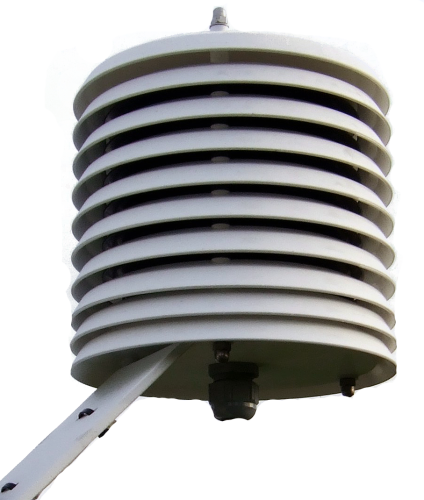
More accurate measurements than comparable shields












Overview
These radiation shields are designed to house temperature and humidity probes to protect them from the heating effects of solar radiation and also to protect them from direct exposure to rain and snow. The shields have improved design and performance characteristics compared to similar screens on the market whilst still being relatively low cost. Read MoreBenefits and Features
- Reduction in solar radiation errors - greater accuracy
- Unique wasp and bug deterrence
- Easily dismantable double louvre stack for cleaning
- Extra secure positive locking sensor grips
- Proven toughness, UV stability and salt spray resistance
- No power required
- Low cost compared to large Stevenson screens
- Good protection of sensors from rain and snow
- Easy and fast installation
- Long term durability
Technical Description
All unaspirated radiation shields overheat when solar radiation is high and wind speed is low. Problems are also seen in the winter when the sun’s angle is low or there is reflection off snow. However, the unique design and construction of these sensors is specifically designed to overcome these issues.
The design of this shield has a white outer reflective surface combined with an inner barrier of non-reflective, black louvres to prevent sunlight reaching the sensor whilst still allowing air to flow through to the sensor. This unique construction is more effective at blocking solar radiation and thus the sensors inside the shield give a more representative reading of the true air temperature and relative humidity. Errors under adverse conditions are typically half those compared to similar shields.
The shape of the louvres is based on an established design that is in common use in a modern Stevenson screen made by the same manufacturer. That screen is sold to national meteorological services worldwide
Images

Specifications
Typical solar heating errors:
Conditions of high solar radiation and wind speeds less than 1 m/s. Measurements made in comparison to an aspirated shield.
MET21 : +0.5 °C
These errors can be as little as half those of other similar shields on the market.
The performance is not dissimilar to large Stevenson screens, although the time constant of these shields is shorter.
Probe compatibility:
MET21: houses larger probes 14-25 mm in diameter taking up to 220 mm of the probe inside the shield. It can house the CS215, HC2S3, HMP45, HMP155, MP100A or smaller probes such as the 107 or PT100 using an adaptor.
Material Specifications:
Double louvered high impact thermoplastic - White external layer, with U.V. stabiliser for long-term weather resistance, extra black internal layer
Aluminium arm, powder coated in white – with phosphate pre-treatment.
A4 grade (316), stainless steel ‘V’ bolt, and securing nuts to fit a pole of between 25-51 mm diameter
Black acetal plastic locating clamp
Overall size:165 diameter x 274 mm height (Shield only); 405 mm height including bracket. Weight 1.32 kg
Resources and Links
Product Brochures
Privacy Policy Update
We've updated our privacy policy. Learn More
Cookie Consent
Update your cookie preferences. Update Cookie Preferences